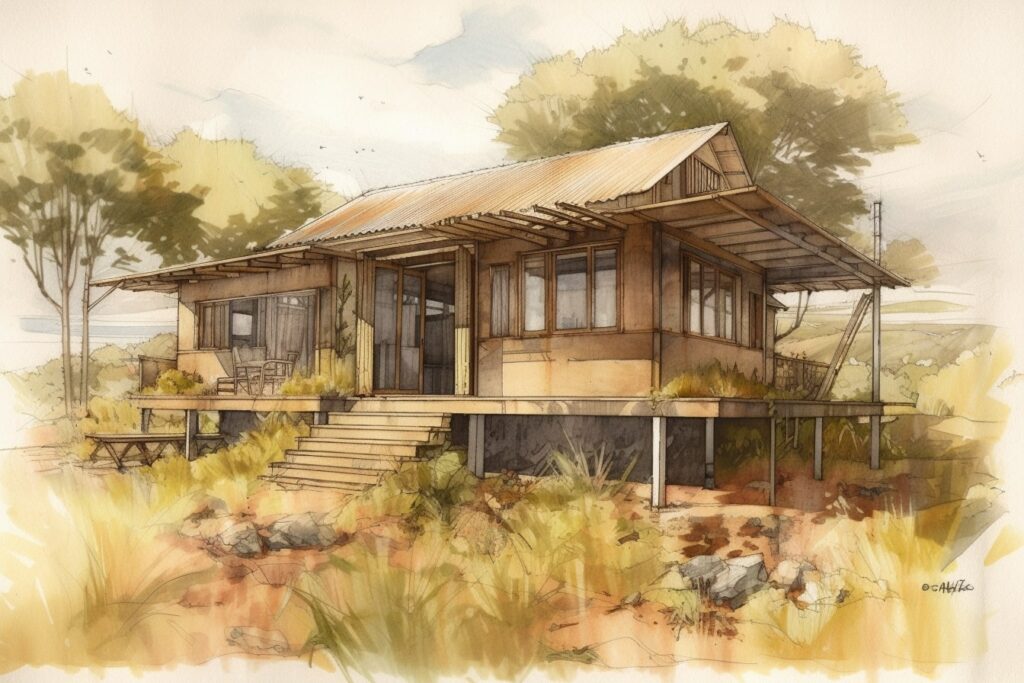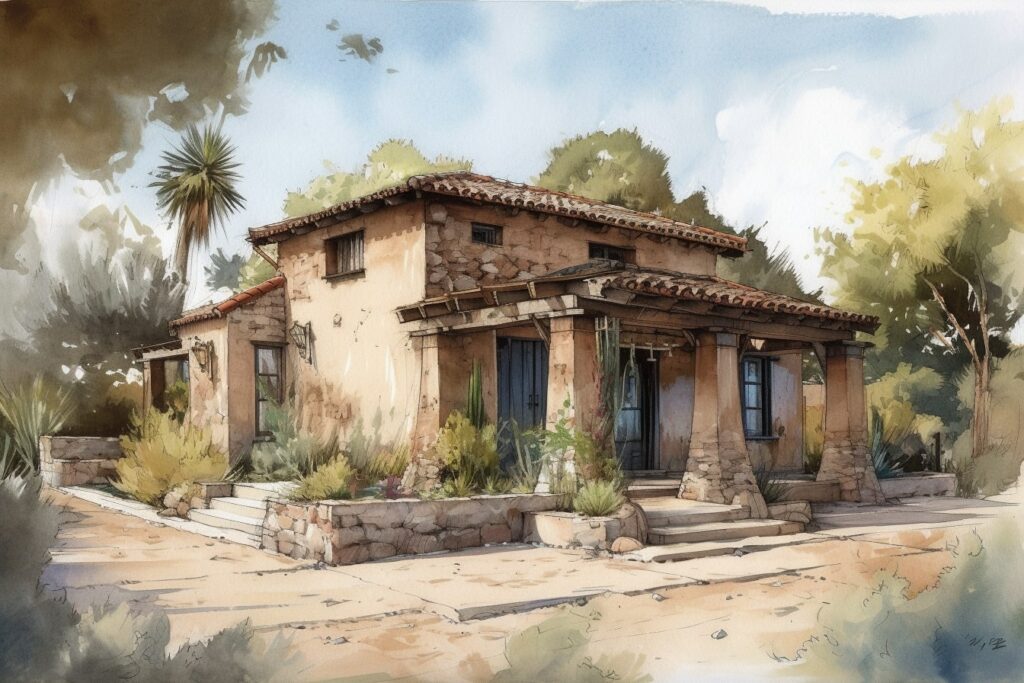Unlock Premium, Members-Only Content
Your source for the most relevant updates in sustainable construction
Permaculture, derived from blending “permanent” and “agriculture,” has evolved into a multidisciplinary approach to sustainable living.
With the ever-growing global concerns about climate change, resource depletion, and ecological balance, architects and interior designers are embracing permaculture principles to create functional and environmentally-friendly spaces.
This comprehensive guide will dive deep into permaculture, how it benefits the built environment, and why you should consider incorporating it into your next project. We’ll also address the most commonly asked questions surrounding the topic.
What is Permaculture?
Permaculture is an ecological design system that aims to create sustainable human habitats by mimicking natural ecosystems.
It was developed in the 1970s by Australian ecologists Bill Mollison and David Holmgren as a response to the damaging effects of conventional agriculture on the environment.
Since then, the concept has expanded to include agricultural practices and architectural and interior design principles. It strives for the harmonious integration of human activities with natural systems, emphasizing the efficient use of resources, waste reduction, and closed-loop systems.
The Three Ethics of Permaculture
Permaculture revolves around three core ethics:
- Earth Care: Protecting and regenerating the earth’s natural resources to maintain a healthy ecosystem.
- People Care: Ensuring people have access to the resources and knowledge needed to live sustainable and fulfilling lives.
- Fair Share: Equitably distributing resources, ensuring everyone’s needs are met while considering the planet’s carrying capacity.

The 12 Principles of Permaculture
Mollison and Holmgren also developed 12 guiding principles that serve as the foundation of permaculture design:
- Observe and Interact: Understand the environment and its patterns to make informed design decisions.
- Catch and Store Energy: Capture and store renewable energy and resources for later use.
- Obtain a Yield: Ensure that designs provide tangible benefits to users.
- Apply Self-Regulation and Accept Feedback: Encourage self-regulation and learning from mistakes.
- Use and Value Renewable Resources and Services: Prioritize renewable resources and natural systems over non-renewable alternatives.
- Produce No Waste: Minimize waste through efficient design and closed-loop systems.
- Design from Patterns to Details: Recognize natural patterns and use them as inspiration for design solutions.
- Integrate Rather Than Segregate: Promote cooperation and symbiosis between design elements.
- Use Small and Slow Solutions: Focus on small-scale, adaptable solutions that are easy to implement and maintain.
- Use and Value Diversity: Embrace various elements, species, and practices to create resilient systems.
- Use Edges and Value the Marginal: Recognize the value in transitional spaces and utilize them effectively.
- Creatively Use and Respond to Change: Adapt designs to account for inevitable changes in the environment and user needs.
How Does Permaculture Apply to Architecture and Interior Design?
Permaculture’s holistic approach to sustainable living can be seamlessly integrated into architectural and interior design practices. Here are some ways permaculture principles can be applied to these fields:
- Site Analysis: Thoroughly evaluate the site’s natural features, climate, and local resources to inform design decisions.
- Energy Efficiency: Optimize building orientation, insulation, and natural ventilation to reduce energy consumption.
- Water Management: Incorporate rainwater harvesting, greywater recycling, and low-water-use fixtures to conserve water.
- Sustainable Materials: Choose locally-sourced, renewable, and low-impact materials to minimize a project’s environmental footprint.
- Biophilic Design: Integrate natural elements, such as plants, water features, and natural lighting, to create a healthier indoor environment and foster a connection to nature.
- Indoor Air Quality: Prioritize proper ventilation, air filtration, and non-toxic materials to maintain a healthy indoor atmosphere.
- Adaptive Reuse: Consider repurposing existing buildings or materials to reduce waste and conserve resources.
- Urban Agriculture: Incorporate edible landscaping, green roofs, or vertical gardens to enhance local food production and biodiversity.
- Waste Management: Design spaces for recycling, composting, and responsible waste disposal.
- Social Connectivity: Create spaces that encourage social interaction, community engagement, and sharing of resources.
Most Asked Questions about Permaculture
What is the difference between permaculture and traditional architecture/interior design?
Permaculture goes beyond the aesthetics and functionality of traditional design by prioritizing ecological sustainability, social responsibility, and long-term resilience. It seeks to mimic natural ecosystems and optimize the use of resources, creating spaces that benefit both people and the planet.
Can permaculture be applied to existing buildings?
Yes, permaculture principles can be retrofitted into existing structures. This can include improving energy efficiency, installing water-saving fixtures, implementing waste management strategies, or introducing biophilic elements to enhance the indoor environment.
How does permaculture contribute to climate change mitigation?
Permaculture aims to reduce the environmental impact of the built environment by minimizing energy consumption, promoting the use of renewable resources, and enhancing carbon sequestration through urban agriculture and green infrastructure.
How can permaculture help reduce operating costs for buildings?
Permaculture-based designs often lower energy and water consumption, reducing utility costs. Additionally, using durable, low-maintenance materials can minimize long-term maintenance expenses.
Are permaculture principles suitable for urban settings?
Absolutely! Permaculture principles can be effectively applied in urban contexts, such as green roofs, vertical gardens, and community-shared spaces. These solutions can help address urban challenges like food security, air quality, and social cohesion.

Permaculture: A Conclusion
As architects and interior designers, you can shape the built environment and contribute to a more sustainable future. Embracing permaculture principles in your designs benefits the environment and enhances the well-being of the people who inhabit those spaces.
Integrating these principles into your practice will create functional, resilient, and environmentally responsible projects that stand the test of time.
To learn more about permaculture and how it can elevate your work, consider exploring UGREEN sustainability consultancy services or discovering UGREEN Skills, our sustainability educational platform designed for professionals and companies.
With our guidance, you can develop the expertise needed to lead the industry in sustainable design and transform how we live and interact with the built environment.
Unlock Premium, Members-Only Content
Your source for the most relevant updates in sustainable construction
If you need our services in the Portuguese language, click here.